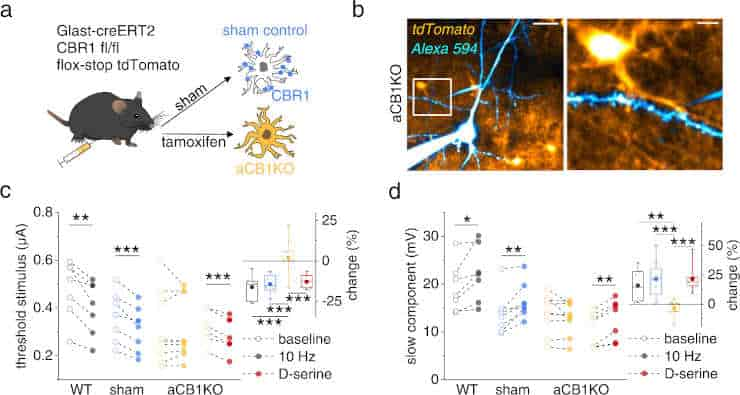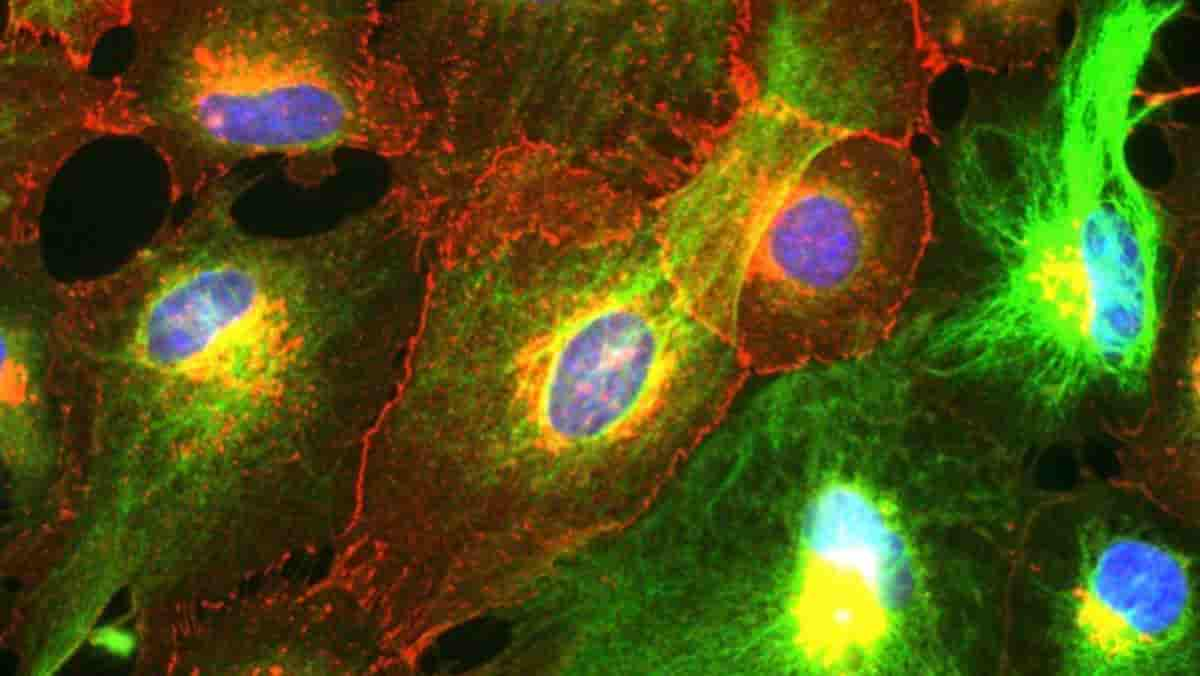Glial cells insulate nerve cell “wiring” or provide optimal working conditions for them. A new study led by the University of Bonn has discovered another function in rodents: the findings suggest that a specific type of glial cell is important in spatial learning.
Each place in our world has its own unique features that make it stand out and make it easy to recognize as a whole. A twisted tree. At its base is a babbling brook. Wildflowers in the background are fragrant.
When we first visit a place, we remember this combination of features. When we encounter the interplay of tree, brook, and wildflower meadow again, our brain recognizes it: we recall being there before.
Mechanisms such as dendritic integration of synaptic activity make this possible.
“We were able to show that the so-called astroglial cells or astrocytes play an essential role in this integration. They regulate how sensitive neurons are to a specific combination of features,”
said Prof. Dr. Christian Henneberger from the Institute of Cellular Neuroscience at the University Hospital Bonn.
Spatial Memory Place Cells
In their investigation, the scientists closely examined rodent hippocampus neurons. One part of the brain that is crucial to memory functions is the hippocampus. In terms of spatial memory, this is especially true.
“In the hippocampus, there are neurons that specialize in just that; place cells,”
said Henneberger.
The mouse hippocampus alone contains about a million of these place cells. Each one reacts to a particular set of environmental factors.
Dendrites are lengthy extensions found on place cells. These are branched like a tree’s crown and have numerous contact points. Our senses transmit information about a location to this area, a connection point known as a synapse.
“When signals arrive at many neighboring synapses at the same time, a strong voltage pulse occurs in the dendrite; a so-called dendritic spike. This process is what we call dendritic integration: The spike only occurs when a sufficient number of synapses are active at the same time. Such spikes travel toward the cell body, where they can trigger another voltage pulse, an action potential,”
explained Dr. Kirsten Bohmbach, who performed the majority of the study’s experiments.
D-serine Release

Deletion of astrocytic type 1 CBRs disrupts the frequency-dependent modulation of dendritic spiking by pyramidal cell activity.
Credit: Bohmbach, K., Masala, N., Schönhense, E.M. et al. (2022) CC-BYPlace cells generate action potentials at periodic intervals. The rate at which they accomplish this can vary greatly. In contrast, when mice orient themselves in a new environment, their place cells oscillate in a specific rhythm, generating between five and ten voltage pulses per second.
This rhythm triggers the release of specific messenger substances by nerve cells. And this is where astrocytes come in: They have receptors to which these messenger substances dock, causing the release of a substance known as D-serine.
“The D-serine then migrates to the dendrites of the place cells. There, it ensures that the dendritic spikes can develop more easily and are also much stronger,”
Bohmbach said.
When mice are in orientation mode, they can more easily store and recognize new locations. It’s like a cab driver focusing on navigating the city center and memorizing changing locations.
The passenger next to the driver is also looking at the road, but his attention is diverted elsewhere, and he notices less. There are, however, also quite different processes involved in such attention phenomena.
“If we inhibit the assistance provided by astrocytes in mice, they are less likely to recognize familiar places,”
Henneberger said.
This does not apply to locations that are particularly relevant, such as those that pose a potential danger: these are still avoided by the animals.
As a result, the mechanism discovered by the team controls the threshold at which location information is stored or recognized.
The findings shed new light on how memory works and is controlled. They may also help to answer the question of how certain types of memory disorders develop in the medium term.
Reference:
- Bohmbach, K., Masala, N., Schönhense, E.M. et al. An astrocytic signaling loop for frequency-dependent control of dendritic integration and spatial learning. Nat Commun 13, 7932 (2022).
Last Updated on January 30, 2023
